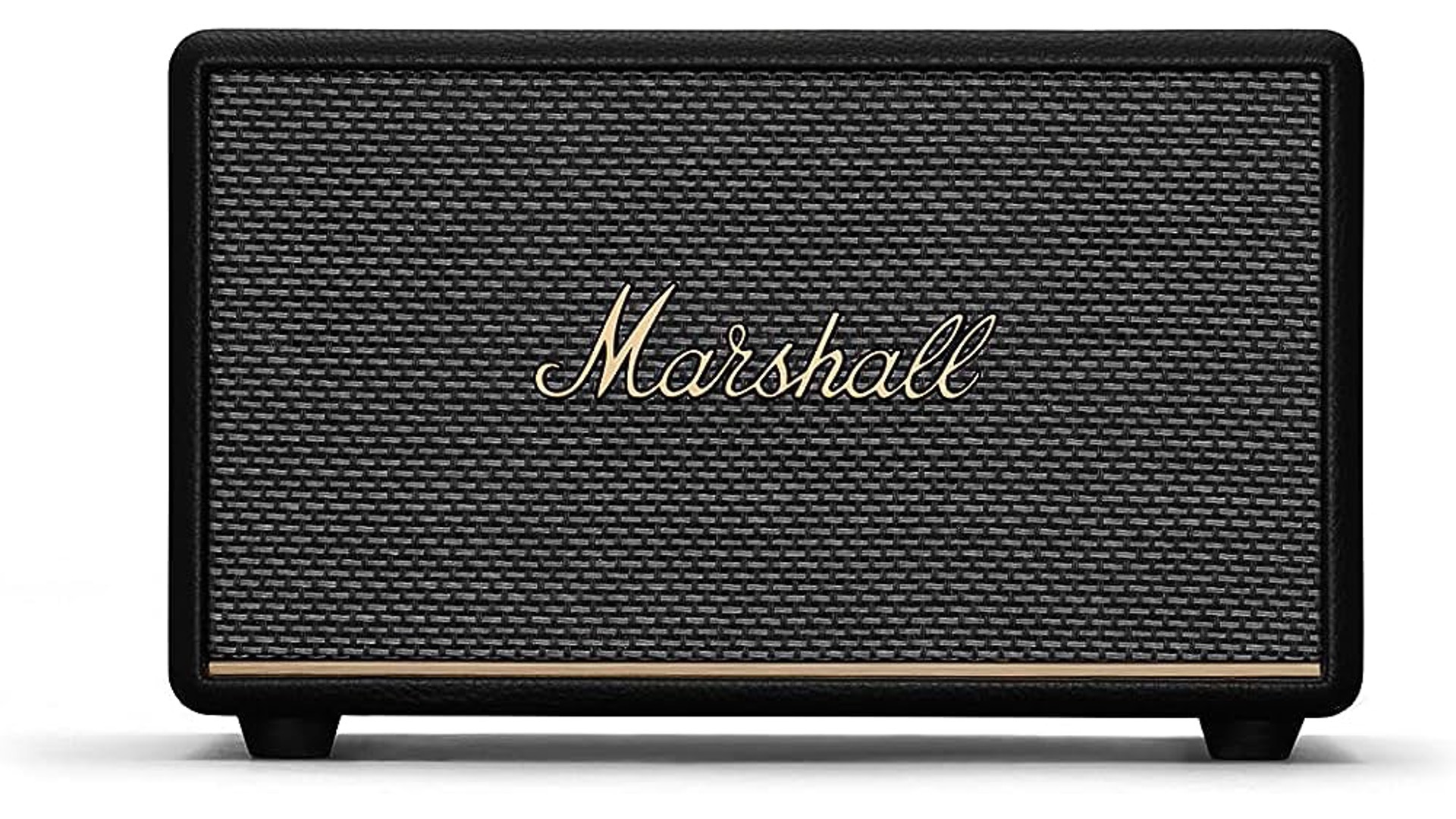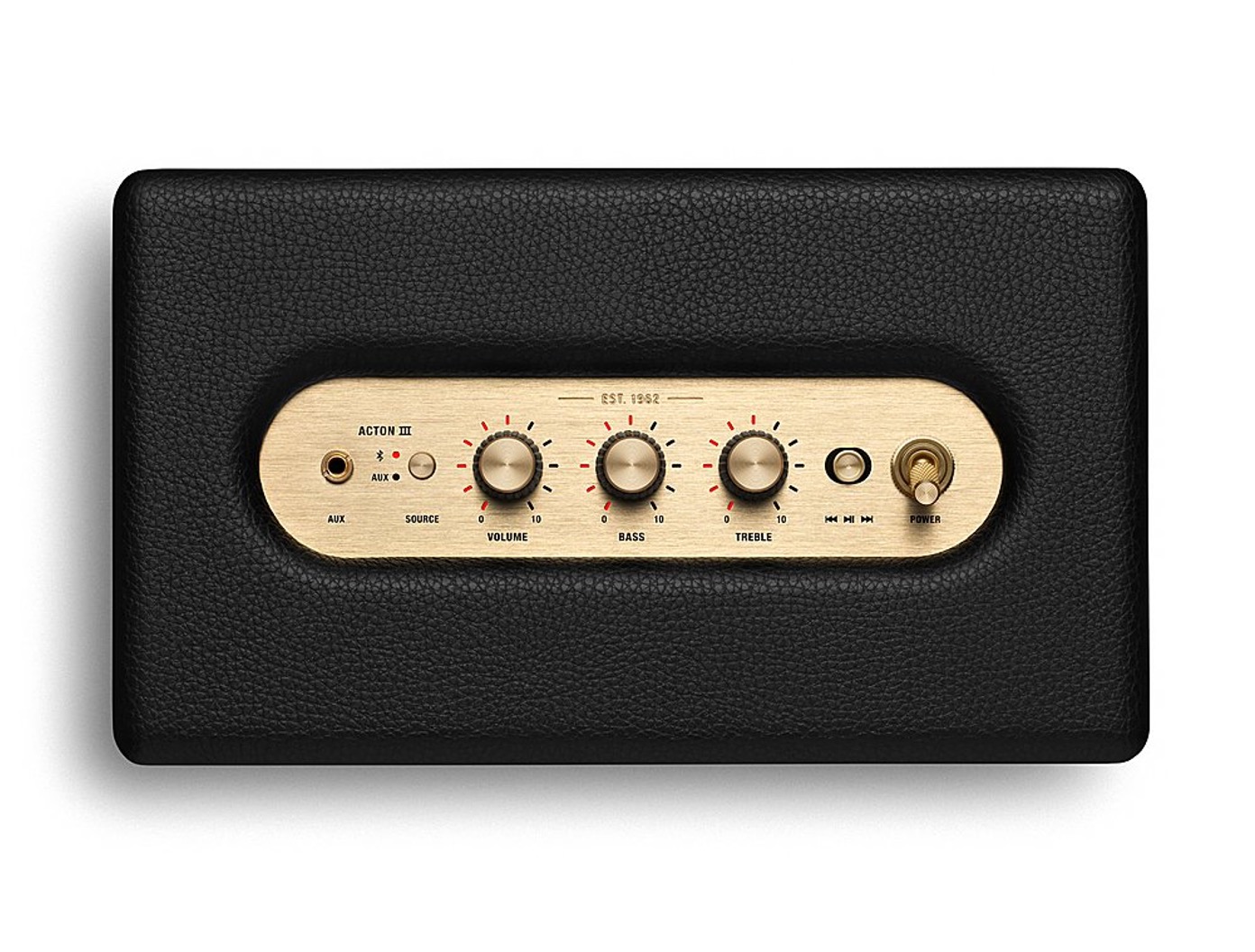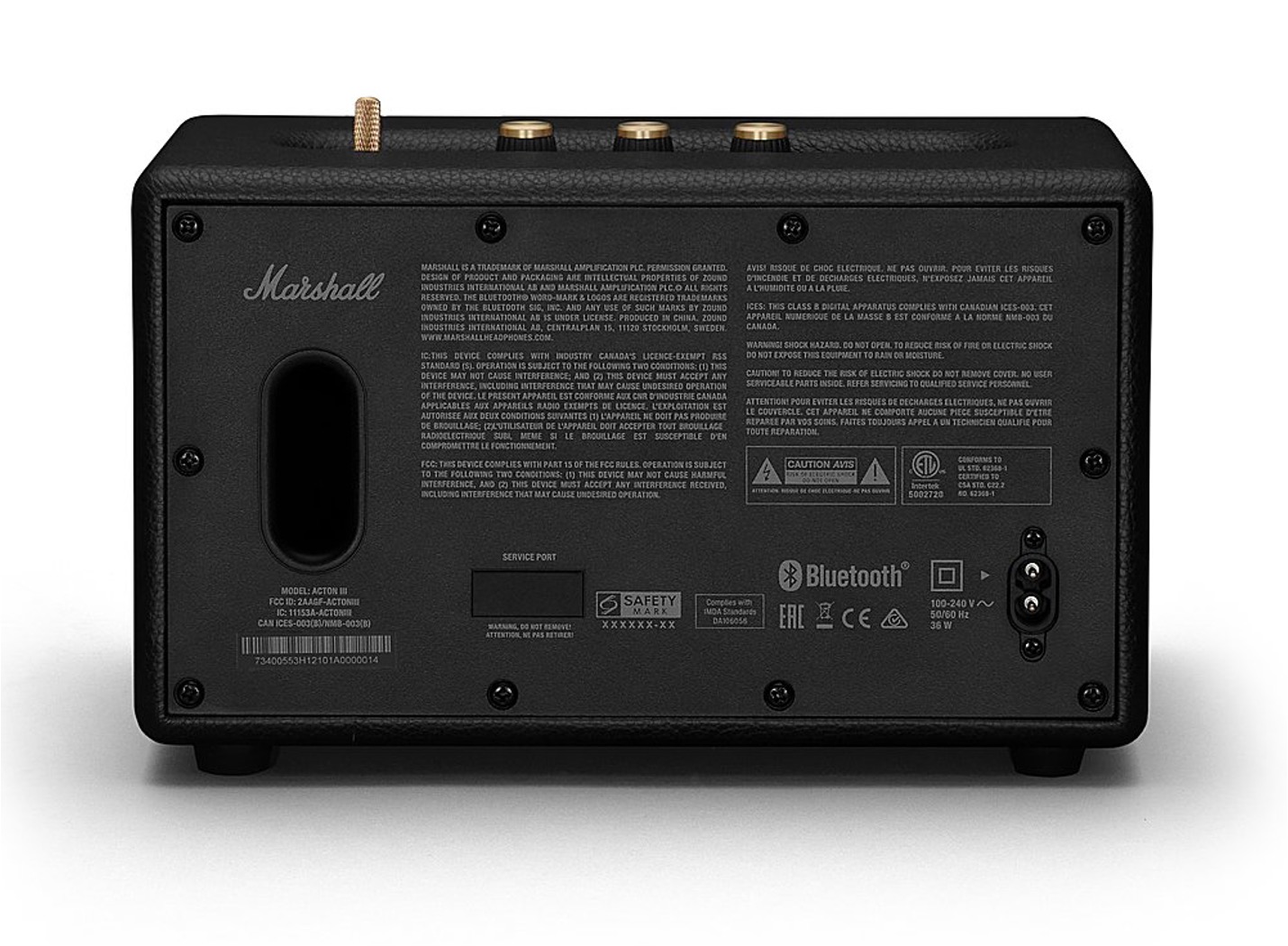The Marshall Acton III is one of the most compact and portable Bluetooth speakers designed by Marshall that delivers up to 60W RMS of total power output and is the second loudest speaker developed by Marshall apart from the Stanmore III speaker. The Acton III is equipped with one 30W Class D amplifier for the woofer and two 15W Class D amplifiers for the tweeters, delivering a total of 60W of sound. Like the Stanmore III, the Acton III also comes with a bass reflex port which enhances the lower-end bass response for rock and hip-hop soundtracks.
Despite its relatively compact size (it has a dimension of 10.24 x 6.69 x 5.91 in), the Acton III can pump out up to 95 dB of volume and has a wide frequency range from 45 Hz to 20 kHz, which is a slight improvement over the Acton II’s previous 50 Hz low-end frequency range. Compared with the Acton II, the Acton III speaker also uses the latest Bluetooth 5.2 codec compared to the Acton II’s Bluetooth 5.0 and comes with brass plated knobs to adjust the volume, bass and treble. The Acton III speaker also comes with outward angled tweeters which helps to provide a wider soundstage and listening field and supports 3.5mm and 1/8” inputs for music sources.

Sound Performance
We really liked the sound performance of the Acton III speaker. Compared with the Stanmore III, the Acton III speaker delivers a more neutral frequency response with really nice highs and crisp vocals. We would say that the Acton III performs particularly well for on-stage live vocals and instrumental performances – the Acton III can really bring out the details in the highs and midrange frequency ranges and give music performances an added sparkle that you don’t usually get with Bluetooth speakers. The Acton III also comes with dual outward pointing speakers which help to improve the soundstage and creates a wider listening field – you can hear where the vocalist is standing on stage and hear details in live performances that you might not have noticed before, such as the sound of the vocalist’s breathing or the subtle strokes of piano keys.
Compared with the Stanmore III, the Acton III delivers much clearer sound performance and are more suited for those who enjoy listening to high-fidelity sound with an emphasis on the highs and vocals. The Marshall Stanmore III speaker, by contrast, delivers much more bass and has a warmer sound signature, and is geared towards those who enjoy bass-heavy music soundtracks. We really liked the neutral sound frequency range of the Acton III – it delivers really clean sound that does not distort at high volume levels, and you can push the speaker to maximum volume and still get pretty clean sound.
In terms of soundstage, the Marshall Acton III basically delivers equally good soundstage to the Stanmore III speaker. The soundfield feels wide and spacious, and you get pretty good audio positioning with various instruments and the vocalist while listening to live jazz performances. You can roughly gauge the distance of where each instrument is located and get a lifelike picture of sound especially for instrumental music pieces.
For a full sound comparison guide between the Acton II and Acton III speaker, please check out our guide here.

Design
The compact design of the Marshall Acton III is probably why we would get this speaker. It’s more compact and portable as compared to the Stanmore III and occupies less space with a dimension of 10.2” x 6.7” x 5.9”, which is smaller than the Stanmore III. Although the Stanmore III is larger than the Acton III, we found the sound quality and clarity in the Acton III to be much better and more refined, making them suitable for critical listening.
The Acton III also comes with a built-in woofer and dual outward-angled tweeters that deliver a wide soundstage with 60W of audio power. The entire speaker is designed like a stage amp and comes with a vintage front design with its signature Marshall logo. The entire speaker is also wrapped in a leatherette material which gives it a very aesthetic appearance. We particularly liked the top panel brass control knobs which allow you to adjust the volume, bass and treble settings – they look really well polished and vintage, which elevates the design of the entire speaker. The Acton III blends in nicely with modern home interior décor and can be placed in small spaces on table tops due to its relatively compact design.

Specs
The Marshall Acton III Bluetooth speaker delivers up to 60W of total power with its single 30W woofer and dual 15W tweeters – the tweeters are outward angled to create a much wider listening field. It also has a wide frequency range of 45 Hz to 20 kHz and comes equipped with a rear bass-reflex port to improve the lower-end frequency response. Like the Acton II, the Acton III speaker also comes with three class D amplifiers and can deliver a max volume output of 95 dB. The Acton III uses the latest Bluetooth 5.2 audio codec for wireless streaming but also supports 1/8” or 3.5mm auxiliary inputs. The Acton III is comparatively smaller than the Stanmore III speaker and requires AC power input – it does not have its own dedicated battery.
The Verdict?
We really liked the Marshall Acton III speaker. It’s a good improvement over the Acton II speaker and comes with the latest Bluetooth 5.2 and delivers a whopping 60W of sound performance with nice highs and crisp vocals. One thing that we really liked about the Acton III is how well it reproduces the highs and midranges, delivering really nice vocals and on-stage live performances with crystal clear clarity. It has a rather neutral sound signature (as compared to the Stanmore III) and the sound has a nice sparkle in the high-end treble ranges. Furthermore, the Acton III is more compact and portable than the Stanmore III speaker and can easily fit on a small table or desk – it has a vintage feel and design that is reminiscent of a Marshall stage amp and is not as bulky as the other Marshall speakers. Overall, the Marshall Acton III is a very good option for those who want a vintage Marshall speaker with great sound performance, but with the advantage of a compact and portable design.

